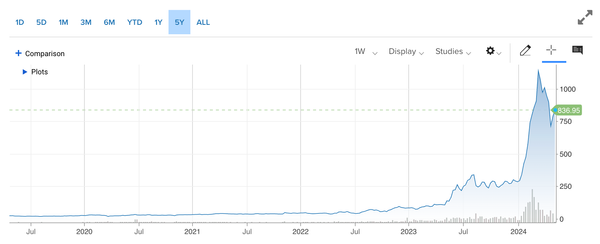Object Storage Optimized Databases: Trends & Industry Leaders

Object storage is the primary storage solution for OLAP databases. This survey highlights major database players that have embraced this movement.
Read more
Object storage is the primary storage solution for OLAP databases. This survey highlights major database players that have embraced this movement.
Read more
In today's data-driven world, object storage has emerged as the foundation for modern workloads including artificial intelligence (AI), machine learning (ML), and data lakehouse analytics. This is evidenced by the fact that all the major Large Language Models—OpenAI’s ChatGPT, Anthropic’s Claude, Google’s Gemini, etc.—are all built on object stores. And as organizations continue
Read more
Anyone who has worked in a team environment knows that every successful team has one go-to person—that special individual who can help you regardless of the nature of your problem. On a traditional software development team, this individual is an expert programmer and is also an expert in one other technology, which could be a database technology like Snowflake
Read more
OpenAI’s move this week to release two new open-weight AI models (gpt-oss-120b and gpt-oss-20b) just changed Enterprise Data Infrastructure forever. The news has rightfully made ripples across the tech ecosystem. Why? * Because these models are released under the Apache 2.0 license, users can for the first time in 5 years, run OpenAI models right on their own devices.
Read more
Enterprises are moving AI and analytics workloads off public clouds to cut costs and regain control without sacrificing performance. Cloud repatriation brings cloud-native design on-prem.
Read more
SELinux will try to tag all files in the filesystem, causing the pod start to be delayed until all files are tagged, often when the PVC has a bigger amount of fies this will cause a timeout and the minio container will not even start.
Read more
The data lake was once heralded as the future, an infinitely scalable reservoir for all our raw data, promising to transform it into actionable insights. This was a logical progression from databases and data warehouses, each step driven by the increasing demand for scalability. Yet, in embracing the data lake's scale and flexibility, we overlooked a critical difference.
Read more
When it comes to storing and managing data, there is the modern, cloud-native way and there is the traditional, appliance oriented way. Needless to say, object storage is the modern, cloud-native way. While it would be simple to suggest that MinIO is hopelessly biased towards object storage (it is, afterall, the only thing we do), that would miss a key
Read more
To support AI and analytics, a data lakehouse must be secure by design. This blog covers best practices for securing storage, metadata, and catalog layers including encryption, fine-grained IAM, audit logging, object locking, and multi-site replication without sacrificing performance.
Read more
MinIO, the leader in high-performance AI storage, has once again raised the bar in the AI infrastructure industry with its groundbreaking MinIO AIStor platform. Leveraging next-generation AMD hardware, KIOXIA NVMe™ SSDs, and cutting-edge software optimizations, MinIO AIStor delivers unmatched performance, scalability, and efficiency for AI-driven and other data intensive workloads. Today, we are excited to share benchmark results that demonstrate
Read more
It is hard to believe that it was 13 years ago that Marc Andressen penned his famous blog entitled “Software is Eating the World.” In it he spoke of the disruption that modern software organizations were inflicting on traditional businesses. Thirteen years later, even in the face of stratospheric valuations for Nvidia, software continues to eat the world. The evidence
Read more
Ransomware attacks are nothing new. The first ransomware attack occurred 36 years ago in 1989, and it is known as the AIDS Trojan PC Cyborg Virus. Floppy disks infected with a Trojan virus were mailed to attendees of the World Health Organization’s AIDS conference and other individuals. The virus waited until the computer had been booted 90 times. Then
Read more
MLOps, short for Machine Learning Operations, is a set of practices and tools aimed at addressing the specific needs of engineers building models and moving them into production. Some organizations start off with a few homegrown tools that version datasets after each experiment and checkpoint models after every epoch of training. On the other hand, many organizations have chosen to
Read more
An abbreviated version of this post appeared on The New Stack on March 19th, 2024. In enterprise artificial intelligence, there are two main types of models: discriminative and generative. Discriminative models are used to classify or predict data, while generative models are used to create new data. Even though Generative AI has dominated the news of late, organizations are still
Read more
Relationships matter, especially in your data. Explore graph analytics without moving data using PuppyGraph, Apache Iceberg, and MinIO AIStor. Quickly set up a cloud-native graph analytics stack that uncovers hidden patterns directly from your data lakehouse.
Read more
Apache Iceberg is significantly transforming modern data lakes. Its introduction to object storage platforms has been celebrated for delivering ACID transactions, strong schema evolution, and warehouse-like reliability to data lake architectures. The Iceberg Catalog API standard is crucial to this transformation, as it ensures that various tools can consistently discover tables and execute atomic transactions once a compliant catalog service
Read more
Large numbers of small files present big challenges for application performance.
Read more
We were talking with a well-respected industry analyst the other day and he challenged us to articulate why Kubernetes is so important to Object Storage. It got us thinking that this was a topic worthy of our time, and yours. Why Kubernetes Demands More Than Just Stateless Apps At the most basic level, the value of Kubernetes lies in its
Read more
Legacy systems drain budgets, slow innovation, and block AI progress. This article shows how phased modernization cuts costs, boosts performance, and builds a future-ready data foundation without disruption. Inaction is the real risk.
Read more
While still in its infancy, it’s no secret that enterprise AI adoption is shaking up the entire technology landscape. Five years ago, CIOs were under immense pressure to figure out their cloud strategy and the answer was, put simply, migrate everything to the public cloud (AWS, Azure, GCP). Now, CIOs are under even more pressure to figure out their
Read more